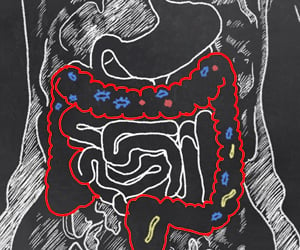A new study suggests that the damage to brain tissue following a traumatic brain injury (TBI) can be limited through controlled application of vacuum pressure.

"Mechanical tissue resuscitation"—consisting of vacuum pressure applied over the injured area of the brain—shows promise as a safe and effective treatment for TBI, according to the research report by Dr. Louis C. Argenta and Dr. Michael Morykwas and co investigators of Wake Forest University of Health Sciences, Winston-Salem, N.C. However, the technique needs further development before it can be studied in humans with TBI.
Could Vacuum Pressure Mitigate Damage after TBI?In the study, which was funded by a major grant from the U.S. Army, the researchers tested the mechanical tissue resuscitation approach by inducing localized TBI in swine, then applying negative pressure—that is, a mild vacuum—over the injured area of the brain. The study evaluated the effects of different levels of pressure, 50 or 100 millimeters of mercury (mm Hg); different application times, three or five days; and different delay times, up to six hours.
The results showed important benefits of applying vacuum pressure after brain injury. Applying 100 mm Hg of pressure for three days led to a significantly smaller area of brain contusion and reduced bleeding, compared to no pressure or 50 mm Hg of pressure. Brain MRI scans showed a more-normal appearance in vacuum-treated animals, which was confirmed by later examination of the brain tissues.
All animals survived after five days of vacuum application, whereas half of animals died when treatment was stopped after three days. The response to vacuum pressure was about the same when treatment was delayed for three hours, compared to no delay. The procedure appeared safe, without the development of seizures or brain deformation. Traumatic brain injury is a devastating problem, with high rates of death and disability and limited treatment options. Following TBI, impaired circulation and accumulation of metabolites and water in the area of injury lead to progressive secondary injury and neuronal (brain cell) degeneration.
The new technique evolved from the successful use of negative pressure to promote healing in other types of wounds. In previous studies, Drs. Argenta and Morykwas and colleagues found benefits of controlled vacuum application to localized areas of TBI in rats. In the new study, they sought to evaluate the safety and effectiveness of this mechanical tissue resuscitation technique in a large-animal model more similar to the human brain with TBI.
Advertisement
Since the effects of vacuum treatment are "purely mechanical," it might be useful in combination with other treatments, Drs. Argenta and Morykwas and coauthors believe. They're performing further studies to optimize the mechanical tissue resuscitation technique before initial trials in human patients with TBI.
Advertisement















